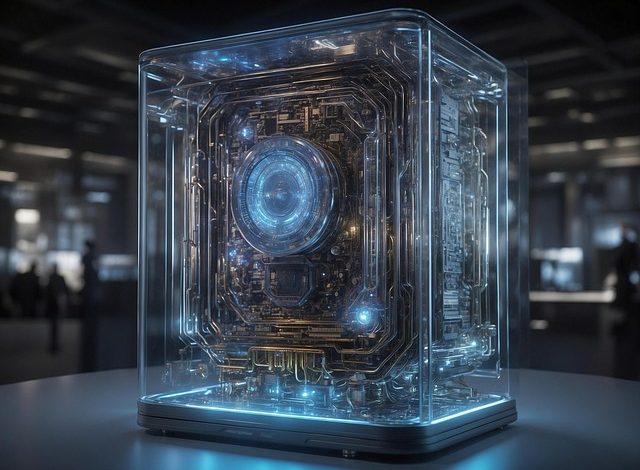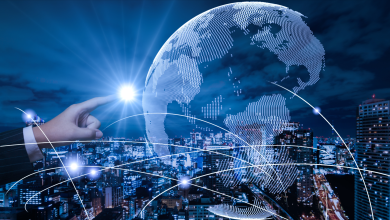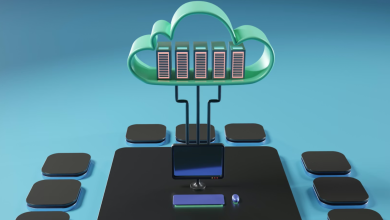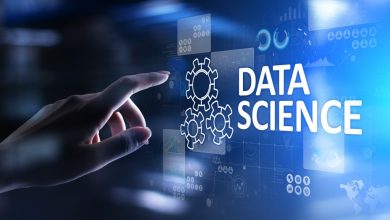
AI Converges with Emerging Tech: The $632 Billion Revolution Reshaping Everything
The race to merge artificial intelligence with 5G, quantum computing, and IoT is creating the biggest tech transformation since the internet, and early movers are already cashing in.
Forget everything you thought you knew about artificial intelligence working alone. The real revolution isn’t happening in isolated AI labs, it’s exploding at the intersection where AI meets 5G networks, quantum computers, and billions of connected devices. And the numbers are staggering.
Global AI spending is set to skyrocket to $632 billion by 2028, more than doubling in just four years with a blistering 29% annual growth rate, according to new data from the International Data Corporation.1 But here’s the kicker: the companies winning big aren’t just betting on AI. They’re betting on the convergence.
The Perfect Storm of Technologies
Picture this: Your factory’s AI brain can predict when a machine will break down three weeks before it happens, automatically order replacement parts, and schedule maintenance, all while communicating through lightning-fast 5G networks with quantum-enhanced optimization algorithms running in the background. Science fiction? It’s happening right now.
“We’re seeing companies reduce equipment downtime by 30% just by combining AI with IoT sensors,” reveals McKinsey research on industrial maintenance systems.2 That translates to millions saved annually for manufacturers brave enough to embrace the convergence.
Take smart cities, where this tech trinity is already reshaping urban life. Traffic lights that think, energy grids that self-heal, and emergency systems that predict problems before they happen—all powered by AI learning from IoT data, transmitted via 5G, and optimized by quantum computing.
The IoT Explosion and Implications
Here’s a number that should make every CEO pay attention: The world will have 40.6 billion connected devices by 2034, up from 19.8 billion next year.3 That’s more than five smart devices for every person on Earth, all generating data that AI systems are hungry to consume.
“The challenge is that all of these puzzle pieces of the Internet of Things, the components that you need in your digital transformation, need to start to come together with business processes,” explains Wienke Giezeman, serial tech entrepreneur and CEO of The Things Industries, in a McKinsey interview. “So far, they’re not connected.”4
The implications are massive. Your smartphone isn’t just communicating with your smart home, it’s part of a city-wide network optimizing traffic, predicting energy demand, and even helping prevent crime through predictive analytics.
Quantum Leap: The Ultimate Game Changer
While most people are still wrapping their heads around regular AI, quantum computing is about to supercharge everything. The World Economic Forum’s latest research suggests quantum technologies will create transformative opportunities across pharmaceuticals, energy, and finance, with early adopters positioning themselves for significant competitive advantages.4
Think of quantum computing as AI’s rocket fuel. Where traditional computers might take years to solve complex logistics problems, quantum-enhanced AI could crack them in hours. Supply chain optimization, drug discovery, climate modeling, and previously intractable problems are suddenly within reach.
The Dark Side: Cybersecurity’s $10.5 Trillion Problem
But this technological utopia comes with a price tag that should terrify every business leader. Cybersecurity Ventures predicts global cybercrime costs will hit $10.5 trillion annually by 2025.5 As more devices connect and AI systems become critical infrastructure, the attack surface expands exponentially.
“Every IoT device is a potential and invisible entry point for hackers,” Bryson Bort, founder and CEO of SCYTHE and cybersecurity expert. “When your coffee maker can access your corporate network, you’re going to have problems.”
Innovative and responsible companies aren’t just investing in these technologies; they’re investing in protecting them. Former CISA director, Jen Easterly, says it best, “Security needs to be built in from the start, not bolted on afterward.” The convergence creates opportunities, but it also creates vulnerabilities that adversaries are eager to exploit.
Regulatory Reality Check: The 7% Solution
Governments worldwide are scrambling to keep up. The Biden administration’s AI Bill of Rights, published in October 2022, set the groundwork for responsible AI development.6 But it’s the European Union that’s really showing its teeth.
The EU’s new AI Act doesn’t mess around; companies violating the most serious restrictions face fines up to 7% of their global revenue.7 For a company like Apple or Google, that could mean tens of billions in penalties. The message is clear: innovate responsibly or pay the price.
The Workforce Revolution
Here’s what might worry workers most: The World Economic Forum’s 2025 jobs report reveals that 39% of current skills will be transformed or obsolete within five years.8 But before you panic, consider this: the same convergence creating disruption is also creating entirely new career paths.
AI specialists, quantum programmers, IoT security experts, these weren’t real jobs a decade ago. Now they’re among the fastest-growing, highest-paying careers in tech. Companies investing in retraining programs aren’t just future-proofing their business; they’re future-proofing their people.
Real-World Winners
The proof isn’t in the theory, it’s in the results. Hospitals using AI-powered diagnostics combined with IoT monitoring are cutting readmissions by 20%.9 Shipping companies testing quantum-enhanced route optimization are slashing fuel costs while improving delivery times. Energy companies deploying smart grids are preventing blackouts before they start.
These aren’t small pilot programs, they’re billion-dollar transformations happening across entire industries.
The Trillion-Dollar Question
So, here’s what every business leader needs to ask: Are you building for convergence, or are you still thinking in silos?
The companies that win over the next decade won’t be the ones with the best AI, the fastest 5G, or the most IoT devices. They’ll be the ones that figure out how to make all three technologies work together seamlessly, securely, and profitably.




